Endemism hotspots are linked to stable climatic refugia (Viewpoint)
Annals of Botany 119: 207–214, 2017 doi: 10.1093/aob/mcw248
Climatic stability has long been considered as a key driver underlying the existence of endemism hotspots, which are defined as geographic regions with high concentrations of plant species found nowhere else on the planet. In this Viewpoint, Harrison and Noss review the linkage between climatic stability and endemism and find it to be supported by ever-increasing geographic, climatic, botanical and genetic evidence. Some studies predict that endemism hotspots will remain more climatically stable than other regions as the climate changes in the near future. In light of this evidence, the Guest Editors of the AoB Special Issue on Endemism Hotspots as Climate Change Refugia call for a renewed focus on the identification and conservation of endemism hotspots, whether or not they are currently threatened by habitat loss.
Authors: S. Harrison and R. Noss
Population-level genetic variation and climate change in a biodiversity hotspot (Review)
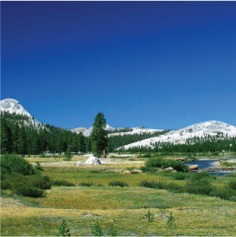
Annals of Botany 119: 215–228, 2017 doi: 10.1093/aob/mcw214
An understanding of the factors that drive genetic structure within and among populations is essential to predicting the consequences of climate change to individual species. This review article highlights the life-history characteristics that underscore species persistence, such as dispersal ability, dormancy strategies and generation time, reproductive ability, degree of habitat specialization and availability, plant-insect interactions, existing genetic diversity and effective tracking of migration corridors. K. Schirenbeck shows that the prediction of species’ responses to climate change will require an integrated approach, utilising population genetics, geography, paleontology and multiple ecological parameters in order to predict and prioritize those conservation areas that are threatened by rapid climate change, anthropogenic disturbance and invasive species.
Author: K. Schierenbeck
Paleo- and neo-endemism in a Mediterranean biodiversity hotspot
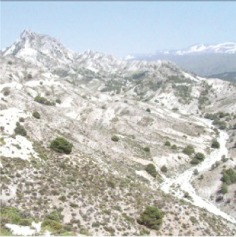
Annals of Botany 119: 229–238, 2017 doi:10.1093/aob/mcw093
Relative phylogenetic endemism (RPE) is a phylogenetic measure of endemism allowing for differentiation between centres of paleo- and neo-endemism. Molina-Venegas et al. apply an RPE analysis to a Mediterranean biodiversity hotspot, together with an assessment of precipitation and temperature related variables and elevation range in order to identifying patterns of plant endemic richness. Clearly differentiated centres of neo- and paleo-endemism are found across the hotspot, encompassing areas where topographical relief may have driven evolutionary diversification of newly evolved species. Water availability is shown to be more critical for the long-term persistence of ancient lineages in refugia regions characterised by smoother topography.
Authors: R. Molina-Venegas, A. Aparicio, S. Lavergne and J. Arroyo
Historical refugia and origins of genetic diversity in a Neotropical savanna tree species

Annals of Botany 119: 239–252, 2017 doi: 10.1093/aob/mcw096
Souza et al. investigate the role of Pleistocene climate changes in driving the geographic distribution and genetic diversity of Dimorphandra mollis, a tree species endemic to the Cerrado, the largest Neotropical savanna and a biodiversity hotspot. Statistical phylogeography, coalescent analyses and ecological niche modelling (ENM) revealed an extensive site of historical refugium across Central Brazil. A spatial cline of genetic diversity decreasing outwards from the centre of this historically stable area was found. The discovery of this refugium could inform the implementation of conservation measures to safeguard the evolutionary potential of the species in face of the threats posed by future climate change.
Authors: H. A. V. Souza, R. G. Collevatti, M. S. Lima-Ribeiro, J. P. de Lemos-Filho and M. B. Lovato
Germination strategies combined with geographic variation ensure survival of an edaphic specialist
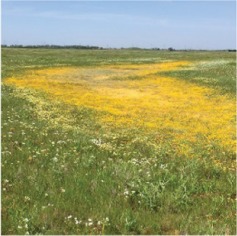
Annals of Botany 119: 253–265, 2017 doi:10.1093/aob/mcw161
Endemic species in biodiversity hotspots are often dependent on edaphic conditions and germination strategies that allow them to persist under climatically variable conditions. Torres-Martinez et al. tested whether geographic variation in historical precipitation patterns predicts patterns of dormancy and germination timing for populations of Lasthenia fremontii, a vernal pool annual endemic to the California Floristic Province. Dormancy levels were predicted by the variance in precipitation at each population’s home location, while seed germination timing was more closely associated with total precipitation levels. The results suggest that the trait of seed dormancy may enable some populations to track the increasingly drier climates predicted by climate change models.
Authors: L. Torres-Martínez, P. Weldy, M. Levy and N. C. Emery
Predestined by phylogeny: seed dormancy and quality in a biodiversity hotspot
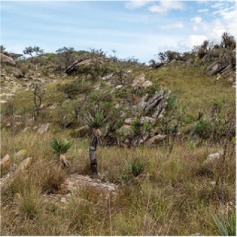
Annals of Botany 119: 267–277, 2017 doi: 10.1093/aob/mcw163
Seed dormancy is recognised as a dominant trait with high adaptive phonological value. However, dormancy is not without danger as there is a risk of increased seed mortality before germination occurs. Dayrell et al. reviewed seed traits and phylogeny of species in the climatically buffered, nutrient-deprived campo rupestre grasslands in Brazil to discover whether the costs of dormancy outweigh the benefits at the community level in a long-term stable and short-term seasonal environment. The majority of campo rupestre taxa (62·5 %) had non-dormant seeds, and the non-dormant/dormant ratio was the highest for any vegetation type on Earth. Seed viability data show that campo rupestre species have a markedly low investment in regeneration from seeds. This study supports the view that environments characterised by long-term climatic and geological stability favour non-dormancy and highlights the need for conservation strategies to mitigate and avoid the loss of biodiversity.
Authors: R. L. C. Dayrell, Q. S. Garcia, D. Negreiros, C. C. Baskin, J. M. Baskin and F. A. O. Silveira
Stable climate characterises hotspots of grass endemism
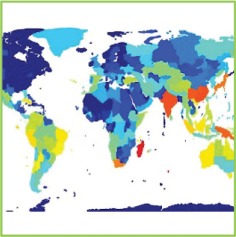
Annals of Botany 119: 279–288, 2017 doi:10.1093/aob/mcw178
Glacial-interglacial climate cycles have far-reaching consequences for ecosystems and it is widely recognised that regions with a history of unstable climates have few endemic species and are susceptible to the establishment of exotic, non-native species from comparatively stable regions. Sandel et al. tested these hypotheses with a global dataset of grass species distributions. Grass endemism is shown to be highly concentrated in regions with historically stable climates. Exotic species occur in areas with extremely stable or unstable climates, with the majority originating from stable regions. This study provides a historical context for the hypothesis that future climate change may increase the likelihood of non-native species invasions.
Authors: B. Sandel, A.-C. Monnet, R. Govaerts and M. Vorontsova
Low-altitude mountain ranges provide refugia for two narrow endemics
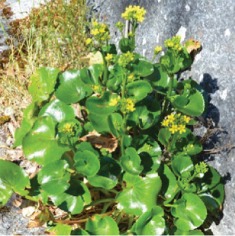
Annals of Botany 119: 289–300, 2017 doi:10.1093/aob/mcw182
Low-altitude mountains are important centres of diversity in landscapes with little topographic variation. Topographic variables and biotic factors (soil depth and vegetation) were important in predicting current distributions of Ornduffia calthifolia and O. marchantii in the low-altitude Porongorup Range region of the Southwest Australian Floristic Region biodiversity hotspot. Keppel et al. deduce from species distribution modelling approaches that both species are likely to severely contract under a milder RCP2.6 climatic projection (2 °C of warming), but are unlikely to persist if warming is more severe (RCP4.5). The Porongurup mountain range constitutes an important refugium for O. calthifolia and O. marchantii, but this valuable and protective site of endemic richness may be severely threatened if global warming exceeds 2 °C.
Authors: G. Keppel, T. P. Robinson, G. W. Wardell-Johnson, C. J. Yates, K. P. Van Niel, M. Byrne and A. G. T. Schut
Karstic microrefugia protect cool-adapted plants
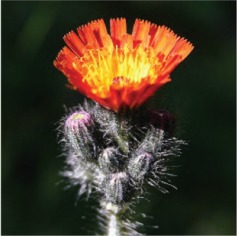
Annals of Botany 119: 301–309, 2017 doi: 10.1093/aob/mcw233
Dolines, small to large-sized bowl-shaped depressions of karst surfaces, may constitute important microrefugia for many vascular plants, as thermal inversion maintains cooler conditions within them. Bátori et al. study the effects of macroclimate, vegetation type and slope aspect on cool-adapted plants from a karst doline of the Bihor Mountains, Romania. At the warmest sinkhole site, distribution of cool-adapted plants was restricted to the deepest parts of the dolines. Within sinkhole sites of intermediate temperature and humidity, the effect of vegetation type and aspect was often significant, with more cool-adapted plants being found in grasslands and on north-facing slopes. Karst dolines can have an important role in facilitating the protection and persistence of cool-adapted plants.
Authors: Z. Bátori, A. Vojtkó, T. Farkas, A. Szabó, K. Havadtői, A. E. Vojtkó, C. Tölgyesi, V. Cseh, L. Erdős, I. E. Maák and G. Keppel


